What the bad jobs report means for markets
Executive Summary
Harley-Davidson, Inc. (NYSE:HOG) reported challenging first-quarter 2025 results on May 1, with global motorcycle retail sales dropping 21% year-over-year amid what the company described as a "volatile macro environment and overall consumer uncertainty." The iconic motorcycle manufacturer delivered diluted earnings per share of $1.07, down 38% compared to the same period last year, while Harley-Davidson Motor Company (HDMC) revenue declined 27% to $1.08 billion.
The company’s operating income margin contracted to 10.8% from 16.2% in the prior year, primarily due to lower motorcycle shipment volumes. Despite these headwinds, Harley-Davidson Financial Services (HDFS) remained a bright spot with a 26.1% operating income margin and 19% year-over-year growth in operating income.
Quarterly Performance Highlights
Harley-Davidson’s consolidated results showed significant pressure across most key metrics, with total revenue falling 23% to $1.33 billion and operating income declining 39% to $160 million compared to Q1 2024.
As shown in the following consolidated results table:
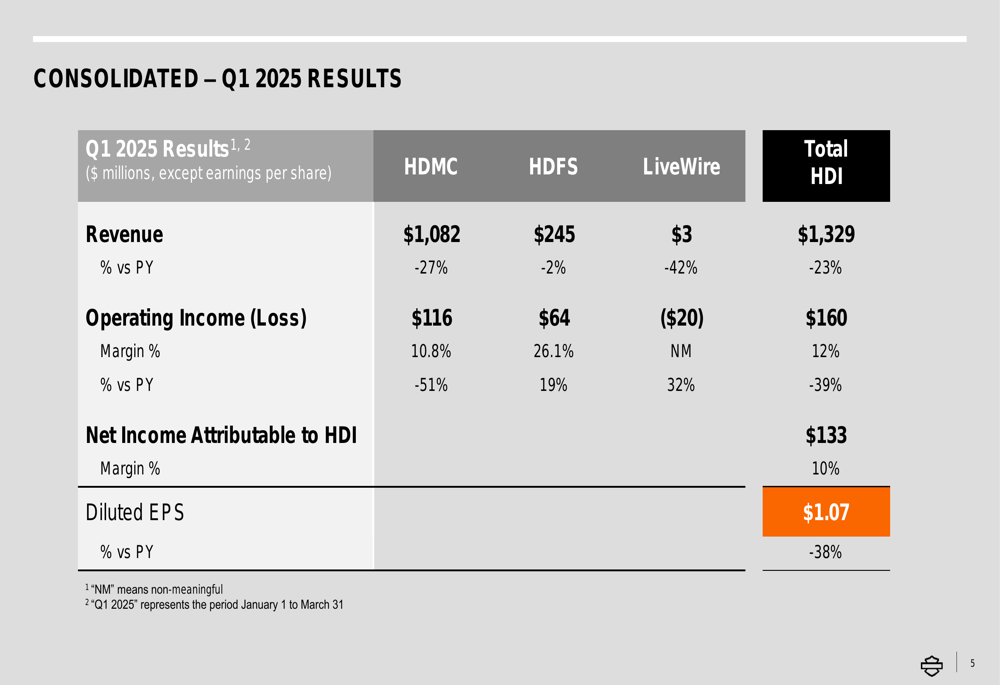
The motorcycle segment (HDMC) bore the brunt of the decline with a 27% revenue drop and a 51% decrease in operating income. The company attributed this primarily to a planned decrease in motorcycle shipments, which appears to be part of inventory management efforts.
A deeper look at the operating income margin reveals the specific factors contributing to the 5.4 percentage point decline from 16.2% to 10.8%:

Volume had the most significant negative impact (-6.6 points), while pricing (+1.9 points) and reduced operating expenses (+2.1 points) provided some offset. Manufacturing and other costs (-3.6 points) also weighed heavily on margins.
Retail Sales and Market Position
Retail sales declined across all regions, with North America (-24%) and Asia Pacific (-28%) showing the steepest drops. The European market demonstrated more resilience with only a 2% decline, though Harley’s market share in Europe fell dramatically from 5% to 2%.
The following chart illustrates the retail sales performance and market share metrics:
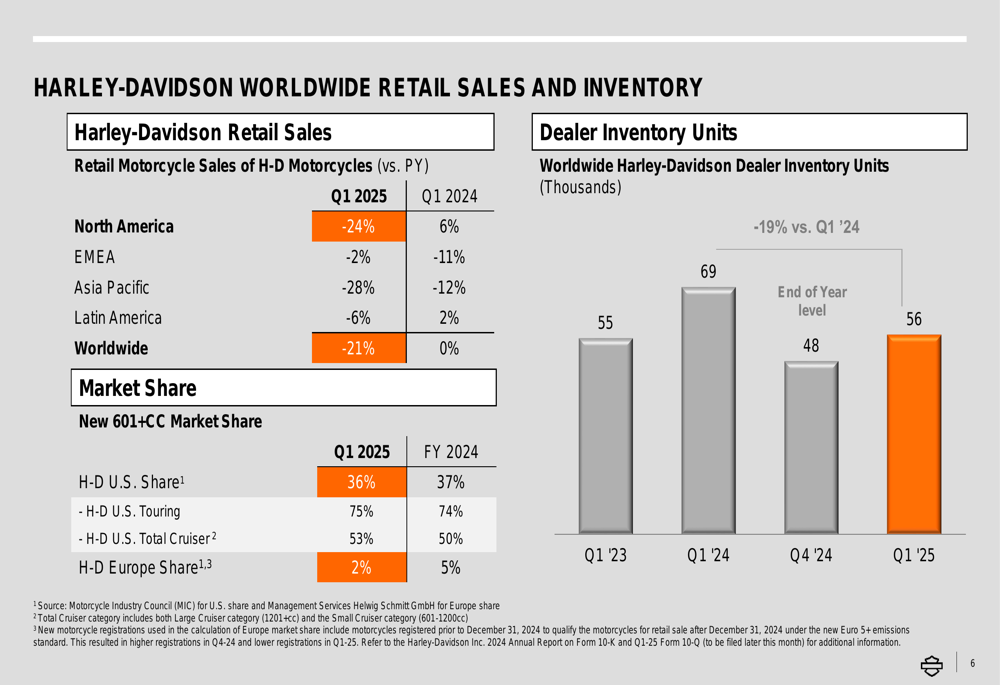
Despite the overall sales decline, Harley-Davidson maintained strong market positions in key U.S. segments, holding 75% of the touring market and 53% of the total cruiser market. However, the company’s overall U.S. market share slipped slightly from 37% to 36%.
Dealer inventory increased from 48,000 units at the end of 2024 to 56,000 units in Q1 2025, reversing the inventory reduction trend mentioned in previous earnings calls. This increase could signal concerns about the company’s ability to manage inventory in the face of declining retail demand.
New Product Launches
On a more positive note, Harley-Davidson reported an encouraging reception to its new Model Year 2025 Softail motorcycle lineup. The launch included six new cruiser models featuring the Milwaukee-Eight 117 powertrains, three ride modes, improved suspension, and enhanced rider experience features.
The company highlighted positive reviews from motorcycle publications, suggesting potential for these new models to help stabilize sales in future quarters:
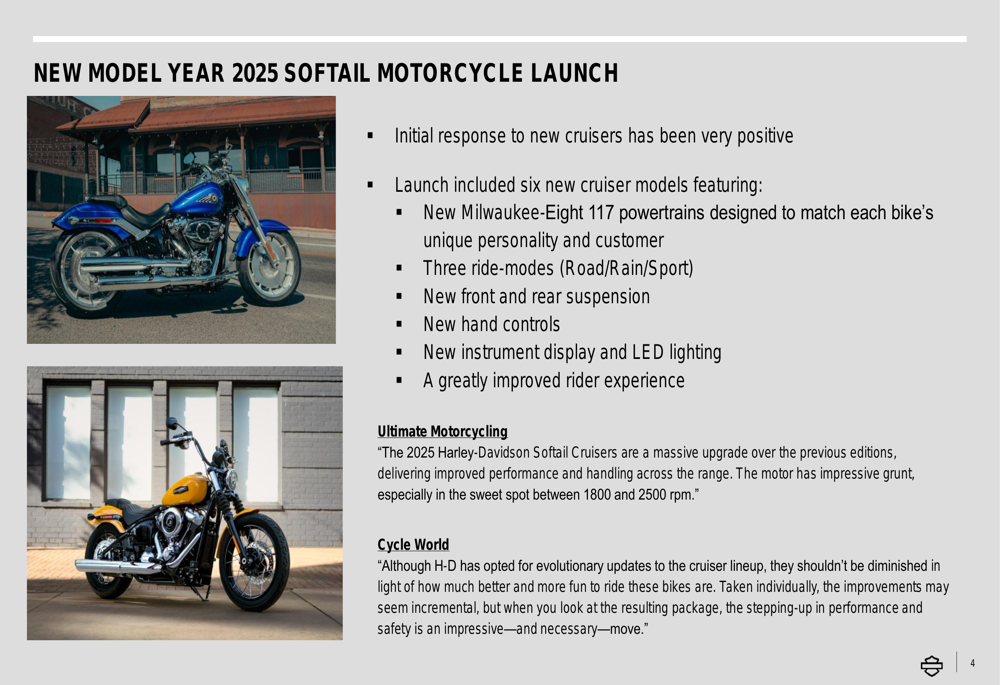
Tariff Impact and Manufacturing Strategy
A significant challenge facing Harley-Davidson is the increasing impact of global tariffs. While Q1 2025 saw a relatively modest $9 million tariff impact, the company expects this burden to increase substantially starting in Q2, with a projected net new tariff headwind of $130-$175 million for the full year 2025.
The following slide details the current tariff landscape and Harley’s manufacturing footprint:
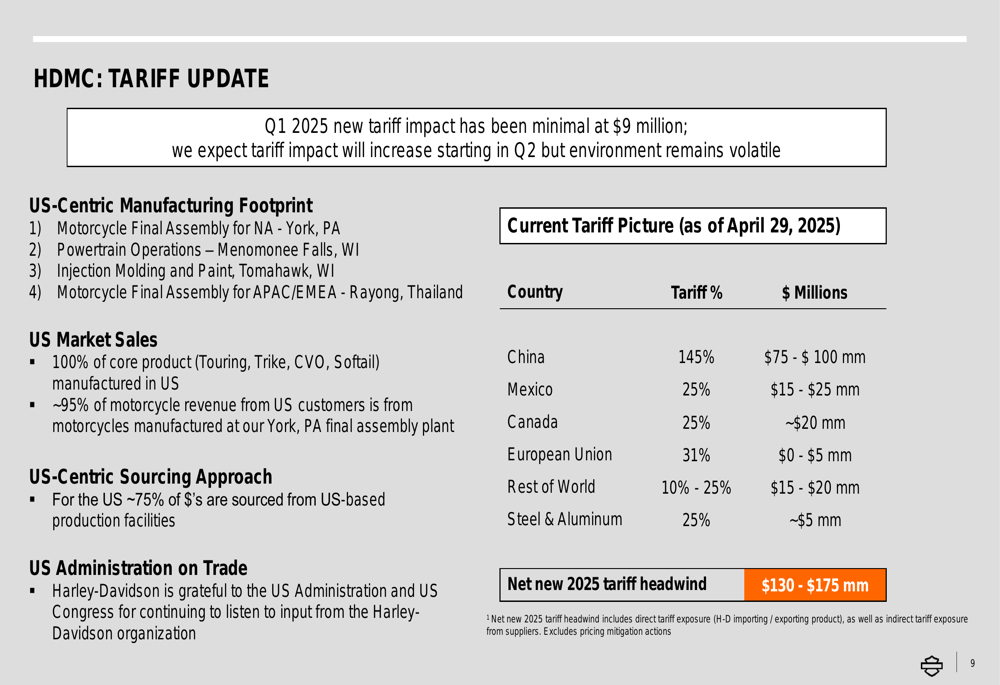
Particularly concerning are the 145% tariffs from China ($75-$100 million impact) and 25% tariffs from Mexico and Canada (combined $35-$45 million impact). The company emphasized its U.S.-centric manufacturing approach, noting that 100% of its core product for the U.S. market is manufactured domestically, with approximately 75% of components sourced from U.S.-based production facilities.
Financial Services Performance
The HDFS segment provided a notable bright spot in an otherwise challenging quarter, with operating income increasing 19% year-over-year to $64 million despite a slight 2% revenue decline to $245 million. This improvement was driven by a 13% reduction in provision for credit losses and a 14% decrease in operating expenses.

However, the credit performance metrics show some concerning trends, with annualized retail credit losses increasing to 3.8% in Q1 2025, up from lower levels in previous years. The allowance percentage for retail finance receivables also increased to 5.7%, suggesting potential concerns about future credit performance:
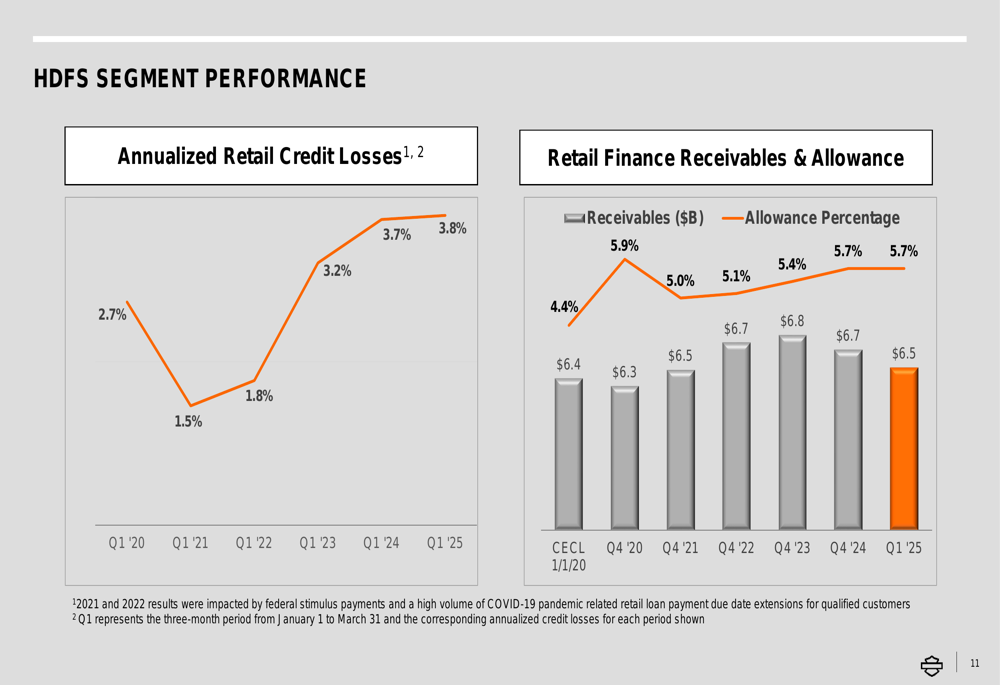
Capital Allocation and Shareholder Returns
Despite the challenging operating environment, Harley-Davidson continued to return capital to shareholders, repurchasing $87 million of shares (3.4 million shares) on a discretionary basis during Q1 2025. The company also paid $23 million in dividends during the quarter.
Operating cash flow improved to $142 million, up from $104 million in Q1 2024, providing some financial flexibility despite the earnings decline:
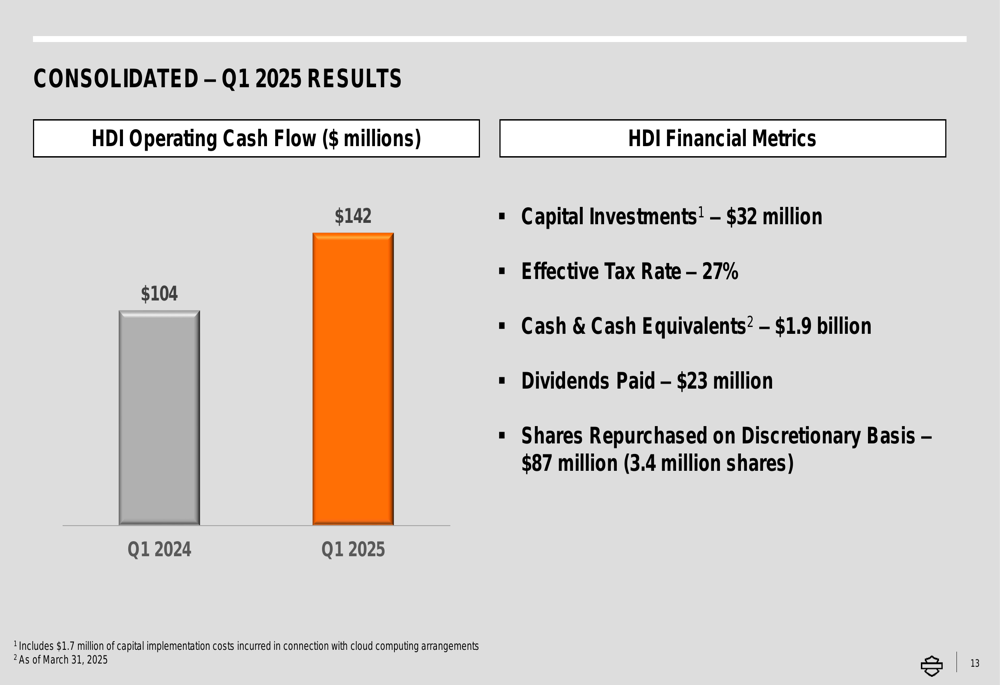
Since 2022, Harley-Davidson has returned $1.5 billion to shareholders through a combination of share repurchases ($1.2 billion) and cash dividends ($304 million). The company has repurchased 34.5 million shares, representing 22% of shares outstanding, and announced a plan in July 2024 to repurchase an additional $1 billion of shares through 2026.
Outlook and Challenges
Looking ahead, Harley-Davidson faces significant challenges from the combination of weak consumer demand, increasing tariff pressures, and credit performance concerns. While the company did not provide specific updated guidance in the presentation, the substantial decline in retail sales and operating margins suggests continued pressure on financial results throughout 2025.
The LiveWire electric motorcycle segment showed some improvement with a 32% reduction in operating loss to $20 million, though revenue declined 42% to $3 million as motorcycle unit sales fell 72% year-over-year.
Harley-Davidson stock (NYSE:HOG) closed at $22.42 on April 30, 2025, near its 52-week low of $20.45 and well below its 52-week high of $39.93. The stock showed a slight 1.87% gain in premarket trading following the earnings release.
The combination of sales declines, margin compression, and increasing tariff headwinds presents a challenging path forward for Harley-Davidson as it attempts to navigate consumer uncertainty while maintaining its premium brand positioning and shareholder returns.
Full presentation:
This article was generated with the support of AI and reviewed by an editor. For more information see our T&C.
